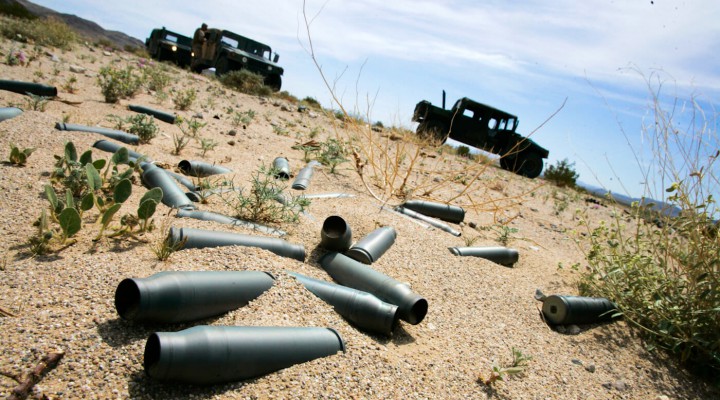The reports were delivered to Inhofe and President Donald Trump, who also denies the existence of climate change. Two months ago, Trump said that he didn’t believe a study on climate change involving 13 federal agencies.
Congress had compelled the Pentagon to conduct the assessment on managing “effects of a changing climate” in the National Defense Authorization Act of 2018.
Report ignores billions in damage
The report studied 79 military complexes, finding that most are, or will be, at risk of becoming severely vulnerable to climate change manifest as flood, wildfires, thawing permafrost, desertification, drought and more.
The report does mention two wildfires in Colorado in March 2018 that hampered training exercises, and discusses flood at the Joint Base Langley-Eustis in Virginia. There, the sea level has risen 14 inches since 1930 and flooding has become “more frequent and severe.”
But the report doesn’t rank the 10 most vulnerable military bases, as it was ordered to do, and doesn’t include any Marine Corps bases. In September, the Corps’ biggest base on the East Coast, Camp Lejeune in North Carolina, was damaged to the tune of $3.6 billion by Hurricane Florence. As a result of the damage, 84,000 gallons of sewage was released on the base.
The following month, Hurricane Michael ripped through Tyndall Air Force Base in Florida, with up to 17 F-22 fighter jets damaged or destroyed. Those fighter jets come at a price of around $339 million apiece, or $5.7 billion for the lot of them. Nonetheless, the appendix to the Pentagon’s report did not mention Tyndall as one of the Air Forces’ most vulnerable sites.
In November, the Naval Base Ventura County in California was evacuated as wildfires approached it, but the base was not listed as an installation where wildfires pose a “current” threat — nor were any other bases, for that matter.
“While this climate report acknowledges that nearly all the military installations it studied are vulnerable to major climate change impacts,” House Armed Services Committee Chair Adam Smith (D-WA) said in a statement on Friday, “it fails to even minimally discuss a mitigation plan to address the vulnerabilities.”
Jack Reed (D-RI), the ranking Democrat on the Committee, accused the Pentagon of “treating climate change as a back burner issue.”
The report says that the Department of Defense is updating infrastructure “to better adapt to climate impacts,” citing a separate assessment that “provided a database with regionalized sea level scenarios… for 1,774 [Department of Defense] sites worldwide.”
The globe as Pentagon’s trashcan
As MintPress News previously reported, the Department of Defense produces more hazardous waste than the five biggest U.S.-based chemical companies combined and is the biggest contributor to global pollution in the world.
Hundreds of U.S. military bases are listed as “superfund sites” by the Environmental Protection Agency. Of the roughly 1,200 Superfund sites in the U.S., nearly 900 (close to 75 percent) are either abandoned military sites or related to the military. The 900 figure does not include current military installations. Camp Lejeune is one such base.
The U.S. has polluted the earth immeasurably through its testing of nuclear bombs. On the Marshall Islands alone, the U.S. dropped more than 60 nukes in the 1940’s and 1950’s. In Iraq, U.S. policies have created severe desertification of 90 percent of the land, turning a country that used to export large quantities of food into a country that imports 80 percent of its food.
The U.S. military’s use of depleted uranium and Agent Orange, among other chemicals, has also contributed to climate change and environmental destruction. Its 19 aircraft carriers and ships that function as such also consume huge amounts of fuel — as do the jets, tanks, and other machinery at the Department of Defense’s 1,774 military sites.
Pentagon Climate Change Report Ignores Its Own Role in Fueling the Crisis

 TheAltWorld
TheAltWorld 



0 thoughts on “Pentagon Climate Change Report Ignores Its Own Role in Fueling the Crisis”